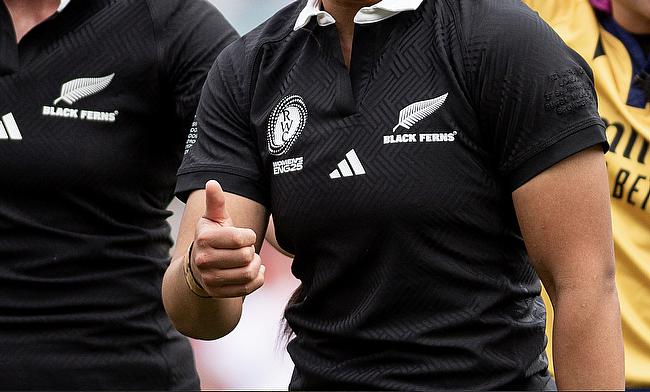How Rugby’s Dress Code Changed Through the Years
Rugby has always been more than just a sport of strength and strategy. It has also been a stage where tradition meets modernity, especially in how players dress.
The rugby shirt, shorts, and boots have gone through a major transformation since the first matches were played in the 19th century. What began as rough woollen uniforms has become sleek, engineered sportswear made for speed and comfort. And as women’s rugby gained ground, the dress code also took on new meaning, shaping identity, equality, and style on the field.
The Early Days – Heavy Kits and Muddy Fields
In the 1800s, rugby players wore clothes that today would look more suited for a school classroom than a pitch. The first teams often played in heavy cotton shirts, long sleeves, and thick collars. These early kits were made to last, not to perform. The material soaked up water, making players heavier after a few minutes in the rain. The collars were stiff, and the buttons could scratch during tackles. Yet, there was a certain pride in the uniform. It showed the team colours clearly, and in many schools, the rugby shirt became part of identity and honour.
Boots were another story. Early rugby boots looked more like work shoes, often reinforced with steel caps for protection. They were heavy and uncomfortable, but in an age without sports science, toughness mattered more than agility. Players wrapped leather laces around their ankles for support, which offered little flexibility but kept their feet stable on muddy ground.
The Shift Towards Comfort
By the early 20th century, rugby started to modernise. Cotton remained the main fabric, but shirts became lighter, and collars got smaller. Clubs began experimenting with stripes, hoops, and embroidered badges. These were the years when teams started to build a visual identity. Rugby fashion, in a sense, became a way to show belonging.
Spectators also started to take an interest in the sport beyond the field. Betting on matches became common across the UK and Ireland, and though most of it happened locally, people now bet for their favourite player or team online. It’s easy to find non GamStop betting sites where fans can place bets safely, even if they are outside official UK limits. This new digital trend connects the traditional sport with modern technology, just like the shift in rugby clothing linked old traditions to new comfort.
The Rise of Synthetic Fabrics
The 1970s and 80s marked the big change. Polyester and nylon entered the game. These synthetic fabrics replaced the old heavy cotton, making the shirts stretchier, lighter, and less absorbent. Players could move faster and stay warmer in cold weather. The introduction of synthetic fibres also allowed for new designs. Suddenly, teams could use brighter colours and logos that stayed visible even after a tough match.
Manufacturers like Canterbury and Adidas began to lead the way. Rugby shirts were no longer handmade in local workshops but produced by sportswear companies that studied performance. They shortened sleeves, tightened fits, and used double stitching for durability. The modern rugby look was born.
Shorts also changed. Early players wore long shorts that reached the knee. By the late 20th century, these were replaced with shorter, lighter designs. This improved movement and made tackling easier. Boots became specialised too, with moulded studs for grip and soft leather for flexibility. Every part of the uniform was now built for speed, safety, and performance.
Women Join the Game
While men had been playing rugby for over a century, women’s rugby started to gain visibility in the 1970s and 80s. At first, women wore uniforms that looked almost identical to men’s kits. The same heavy shirts and long shorts dominated early matches. But as the women’s game developed, so did the clothing.
Women’s rugby teams began to ask for designs that matched their needs. The shirts became more fitted, made to suit different body shapes. Shorts were redesigned to improve comfort and confidence on the pitch. Some early critics accused these changes of being cosmetic, but most players agreed they made the game more practical. For female athletes, the dress code became a symbol of progress — it showed that their version of the sport deserved its own space and attention.
Professionalism Changes Everything
By the 1990s, rugby was turning professional, and that meant more attention to every detail, including what players wore. Sponsors appeared on shirts, bringing colour and advertising to once plain uniforms. The traditional cotton jersey of the amateur era disappeared, replaced by slick, body-fitting tops made from breathable polyester. The new kits helped players avoid tackles by making it harder for opponents to grab loose fabric.
At the same time, television brought rugby into living rooms around the world. Teams wanted to look good under the lights. Uniforms became marketing tools as much as sportswear. Every stripe and logo was designed to stand out on screen. Rugby fashion entered the age of branding.
The Importance of Functionality
Today’s rugby shirts are like pieces of technology. They are made of lightweight fabric that stretches in four directions, wicks away sweat, and resists tearing. Some even use mesh panels for ventilation. The materials are tested for comfort, temperature control, and grip. A modern player’s kit is designed to perform in all weather conditions — rain, mud, or heat.
Boots have evolved too. Synthetic leather and carbon-fibre soles replaced old-fashioned leather. Studs are now shaped for specific field types, and some players even use custom insoles for better balance. Socks are compression-fit to support muscles and improve blood flow. Every part of the outfit has a function.
For referees and teams, there are also colour rules. Each team must wear contrasting shades to make it easier to spot fouls or offside positions. These rules help the game flow smoothly, avoiding confusion on the field.
Women’s Rugby Today
Women’s rugby has grown rapidly, and its dress code now matches the standards of the men’s game. Many top women’s teams work with designers to create kits that combine style and practicality. Some brands even collaborate with players directly to test prototypes. The aim is to support comfort without limiting movement. Many professional female players have said that modern kits give them more confidence and help them feel part of a global sport.
The women’s game has also influenced men’s rugby fashion in return. Bright colours, fitted shapes, and modern cuts have become more common across all leagues. Gender no longer defines rugby style. Performance does.
The Cultural Shift
Rugby clothing is no longer just for the field. Rugby shirts became part of casual fashion in the 1990s, worn by fans, students, and celebrities. The classic cotton rugby top with broad stripes became a timeless look, seen in both sports shops and fashion collections. It shows how deeply the sport has influenced modern culture.
At the same time, the sport remains loyal to its traditions. Many clubs still keep classic designs in their away kits, paying tribute to their early days. The balance between heritage and progress keeps rugby style unique.
Looking Ahead
As technology improves, so will rugby clothing. We might see smart fabrics that track movement or measure heart rate. Sustainability is also becoming important, and many teams now use recycled materials. Future rugby kits will likely focus on eco-friendly fabrics that perform well and protect the environment.
But no matter how much the materials change, one thing remains constant: rugby’s dress code tells the story of its spirit. It is about teamwork, pride, and discipline. The shirt a player wears still means something deep. It connects past and present through colour, sweat, and shared effort.
From woollen shirts soaked in rain to sleek kits designed for champions, rugby clothing has come a long way. It mirrors the sport itself — tough, adaptable, and always moving forward.


